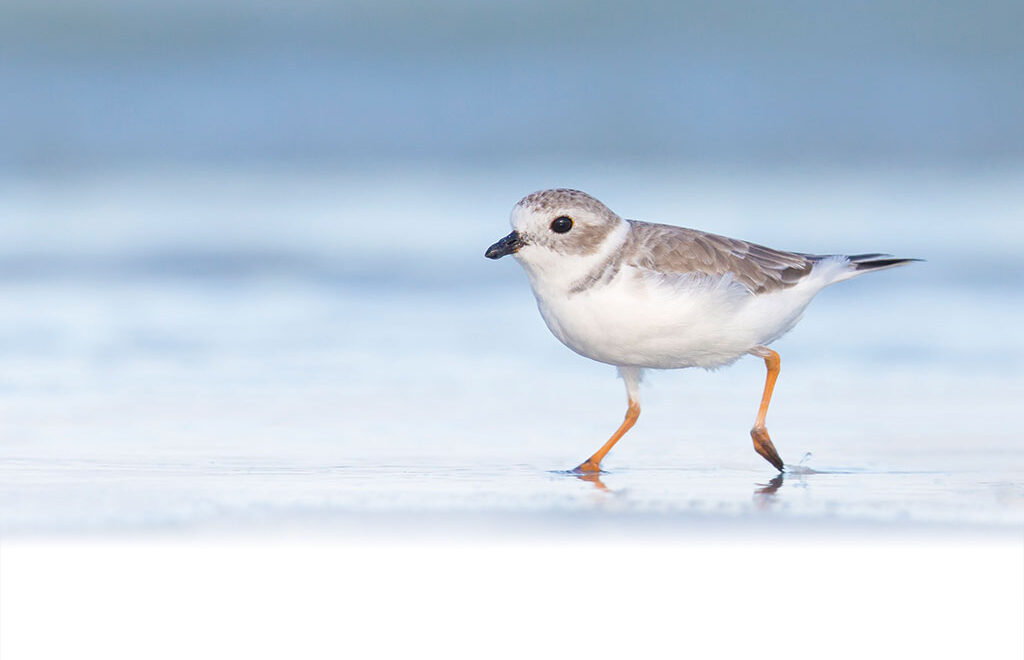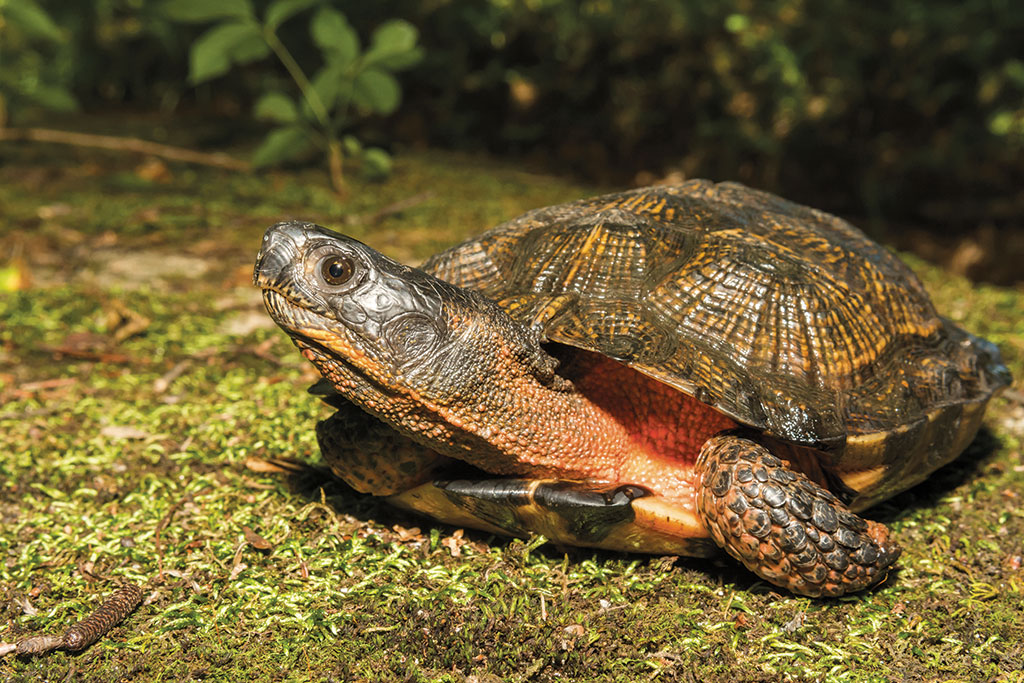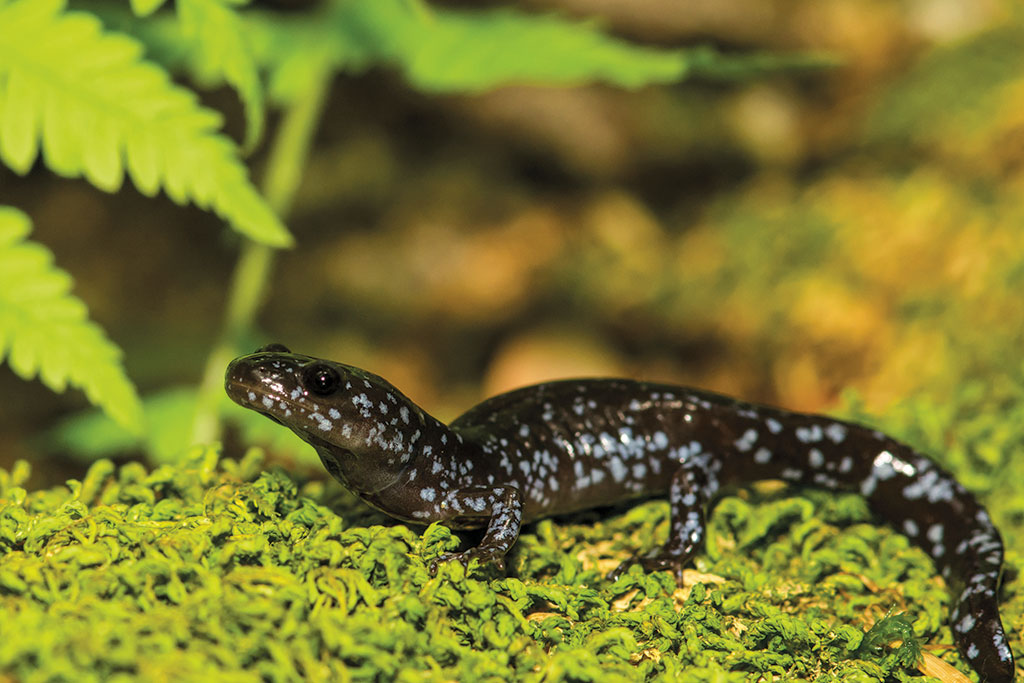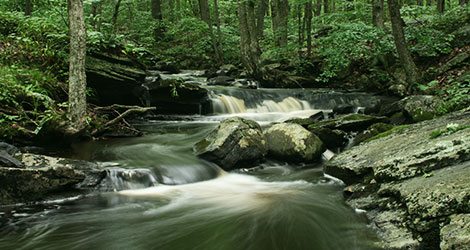
Safeguarding America’s
Greatest Treasures
The US is poised to make the biggest investment in conservation in a half century. Will Congress get the job done this session?
By Timothy Brown
As the sun set on 2022, it became clear that a landmark piece of conservation legislation intended to safeguard America’s endangered species would not be included in the massive omnibus spending package slowly working its way through Congress. It was ironic timing. Just days before, delegates to the United Nations Biodiversity Conference in Montreal had signed the Kunming-Montreal Global Biodiversity Framework, an ambitious agreement that includes a goal to protect 30 percent of the world’s land, inland waters, coastal areas, and oceans by 2030. The United States had sent a delegation to the negotiations, but as one of only two countries who is not a party to the UN’s Convention on Biological Diversity—the other being the Vatican—the U.S. did not sign the historic agreement, this despite numerous commitments to biological conservation that the Biden administration had made for the past two years.

While other environmental concerns (namely the climate crisis) continue to dominate the public discourse, the nation’s biodiversity has received relatively little attention—or funding—in recent years. The Recovering America’s Wildlife Act, or RAWA, would reverse that trend. This historic legislation would provide states, territories, and tribes with an annual injection of $1.4 billion aimed at protecting both critically endangered species as well as safeguarding species before they become “at risk.” Widely considered the most significant conservation bill since passage of the Endangered Species Act a half century ago, the House passed the measure last June with strong bipartisan support, and RAWA already has 32 cosponsors—including both Democrats and Republicans—in the Senate. In this era of divided politics, conservation remains a shared value for most Americans. Advocates insist the bill stalled in the last Congress not for a lack of support, but because officials couldn’t agree on how to pay for it. Still, many remain hopeful that 2023 will be the year that RAWA finally becomes law.
“RAWA remains National Wildlife Federation’s top legislative priority because of the magnitude of the package. It covers all kinds of wildlife species in all 50 states, territories, and the tribal nations,” said Naomi Edelson, Senior Director for Wildlife Partnerships at NWF. “It’s good for wildlife; it’s good for taxpayers; and it’s good for business. There’s lot of desire and recognition that it didn’t get done last time, and it should get done now.”
“It creates a big toolbox to deal with a whole bunch of conservation measures.
In an era of climate change, we’ll going to need all the options on the table.”
Naomi Edelson, National Wildlife Federation.
Edelson says the bill enjoys broad bipartisan support in part because it’s focused on preventing wildlife from becoming endangered. “No one wants to see a species become endangered,” she said. “Some people don’t want all the regulations that come with it; that’s an economic disruption for business. Some people just don’t want to lose wildlife. But regardless, there’s agreement that it’s not good for either people or wildlife when a species becomes endangered.”
More than one-third of America’s fish and wildlife species are now at risk of extinction. In the United States alone, more than 1,600 species are already listed under the Endangered Species Act, another 150 are presumed extinct, and state fish and wildlife agencies have identified more than 12,000 species of greatest conservation need. This is all part of Earth’s unfolding sixth mass extinction, in which, according to a recent United Nations assessment, more than 1 million animal and plant species could vanish in the coming decades. The causes of this crisis vary in different parts of the world, but in the U.S., the key drivers of species declines are habitat loss, invasive species, disease, and the impacts of a shifting climate.
Here in Connecticut, the state’s Department of Energy and Environmental Protection (DEEP) lists more than 600 species of plants and animals as endangered, threatened, or of “special concern.” And while there have been numerous local conservation successes, such as the recovery of the bald eagle and the osprey, the traditional reactive approach to saving endangered species simply isn’t sufficient to meet the current challenge.
Edelson likens the Endangered Species Act to an emergency room. “It’s not quite that simplistic,” she said, “but almost in the sense that it costs more when you’re toward the end and there are less options, and the interventions are more significant. When something becomes endangered, it’s federal dollars—taxpayers’ money—that’s helping to recover it. We support that, of course, but the point is it could’ve cost a lot less earlier.”
Historically, wildlife conservation in the U.S. was almost exclusively tied to the protection of so-called “game” species, animals like deer and ducks that were valued by hunters and anglers. For decades, policies were crafted to protect game species, often to the neglect—or event detriment—of other species. With passage of the 1973 Endangered Species Act, however, efforts shifted to the protection of all species at risk of extinction, regardless of their real or perceived value to humans. Still, 80 percent of funding for state-led wildlife conservation comes from the sale of hunting and fishing licenses and permits. But as the number of hunters and fishers nationally continues to decline—one 2020 study by the advocacy group Wildlife for All found that only 4.2 percent of the population are hunters—states are forced to make difficult decisions about how to spend precious resources. In practice, this often means prioritizing the conservation of animals that folks hunt and fish over their non-game cousins. RAWA would provide critical funding for those species that for decades have been overlooked.

“We’re in a place where the game species have had some significant funding; it’s an ‘if you pay you should benefit mentality;’ giving back to the hunters and anglers because that’s who’s putting money in,” Edelson said. “The majority of all the state’s species, 80 to 90 percent, haven’t gotten funding.”
She cites endangered songbirds, such as various warblers, thrushes, and meadowlarks; salamanders and turtles as examples of nongame species who have received relatively little attention or dollars. Some species at risk, such as butterflies and other pollinators, provide critical support for our food web. Losing them could have long-lasting trophic effects for entire ecosystems.
RAWA would provide funding that could be used, for example, to conserve and restore habitat, fight invasive species, and reintroduce extirpated native species. State fish and wildlife agencies would collectively receive $1.3 billion a year, while tribes would receive $97.5 million for tribal wildlife conservation. (Nationwide, 574 tribes manage more than 140 million acres of land, much of it vital wildlife habitat for threatened species. But unlike states, tribes don’t receive any federal funding for conservation from excise taxes). Advocates say that RAWA will help to boost local economies and the $646 billion outdoors recreation industry by creating an estimated 33,000 jobs a year.
Edelson says the bill has enjoyed broad bipartisan support in part because the vast majority of its funds will go to state and local agencies. “There are often good relationships between Congressional members and their state fish and wildlife agency,” she said. “They’re a trusted source for many members of Congress.”
Much of RAWA’s funding would be funneled through a state’s Wildlife Action Plan. These plans, drafted by each state in 2005 as a requirement to receive State and Tribal Wildlife Grants, serve as blueprints for how a state agency will proactively protect vulnerable species and their habitat before they become more costly to recover. States are required to review and revise their plans every 10 years using the best available science, as well as input from relevant partners and the general public. But state fish and wildlife agencies lack adequate funding to do their job; currently the federal government only allocates $70 million a year for 56 states, territories, and the District of Columbia to implement their Wildlife Action Plans. RAWA would distribute dollars to states based on their size, population, and number of federally listed species. Estimates suggest Connecticut would likely receive $12 million a year to conserve imperiled species such as the wood turtle, New England cottontail, piping plover, and blue-spotted salamander. While previous conservation bills have addressed specific challenges, such as park maintenance or invasive species, RAWA would fund a vast array of conservation initiatives from wildlife surveys and habitat restoration to nature centers, environmental education programs, and outdoors recreation projects.
There’s agreement that it’s not good for either people or wildlife when a species becomes endangered.
When it comes to conserving endangered species, your voice matters. Please contact your elected officials today and ask them to support the Recovering America’s Wildlife Act.
To find your Congressional Representative, visit house.gov. This site allows users to identify their representative and provides contact information for each member.
To contact U.S. Senators Blumenthal and Murphy, go to blumenthal.senate.gov/contact and murphy.senate.gov/contact.

“It creates a big toolbox to deal with a whole bunch of conservation measures,” Edelson said. “It really covers all species and all quarters of the country. In an era of climate change, we’ll going to need all the options on the table.”
Connecticut’s Wildlife Action Plan, revised in 2015, identifies 567 Regional Species of Greatest Conservation Need, including 26 mammals, 95 birds, 31 reptiles and amphibians, 73 fish, 242 invertebrates, and 100 plant species (the state’s 2005 plan identified 475 species, but did not include native plants). These species are found in 10 key habitats and 54 sub-habitats throughout the state. The plan cites habitat loss, degradation, and fragmentation; changes in land use; and competition from non-native or invasive species as some of the most serious threats wildlife face. Those species that appear on the state’s wildlife action plan tend to be the most neglected, and thus will be the ones who will benefit most from RAWA’s dedicated funding. And states will be the ones who largely get to decide how to best spend those conservation dollars.
In 2017, the Alliance for America’s Fish and Wildlife was established with the goal of securing funding for fish and wildlife conservation. An outgrowth of the Blue Ribbon Panel on Sustaining America’s Diverse Fish and Wildlife Resources, its members represent a diverse coalition of like-minded supporters, including the outdoor recreation industry, retail and manufacturing sector, energy and automotive industries, private landowners, educational institutions, conservation organizations, and state, tribal, and federal fish and wildlife agencies. The Alliance has played a critical role in advancing RAWA with the goal of partnering with all Americans to conserve “our precious fish and wildlife and natural heritage for future generations.”
“That’s our job as advocates,” said Edelson, “and this is why I think our coalition is really important. There’s a lot of desire and recognition that it didn’t get done last time, and it should get done now.”
With a new Congress, the legislation will once again have to pass the House Natural Resources Committee before it can go to the House floor. But unlike last year, this time some of the questions around how to pay for the measure are being addressed from the start in an effort to garner more support for the bill. And even with a divided Congress, Edelson believes that RAWA is one of the few, clearly bipartisan bills—especially in the conservation arena—that can pass this session.
“I think that the most important thing is that people know that their voice matters, that it will take us speaking up for fish and wildlife and native plants,” Edelson said, “We started this decades ago and we have our best shot at getting it done in 20 years, so it really is time for people to weigh in and ask their members of Congress to cosponsor the bill and get it passed this session.”
Timothy Brown is the editor of Connecticut Woodlands.





